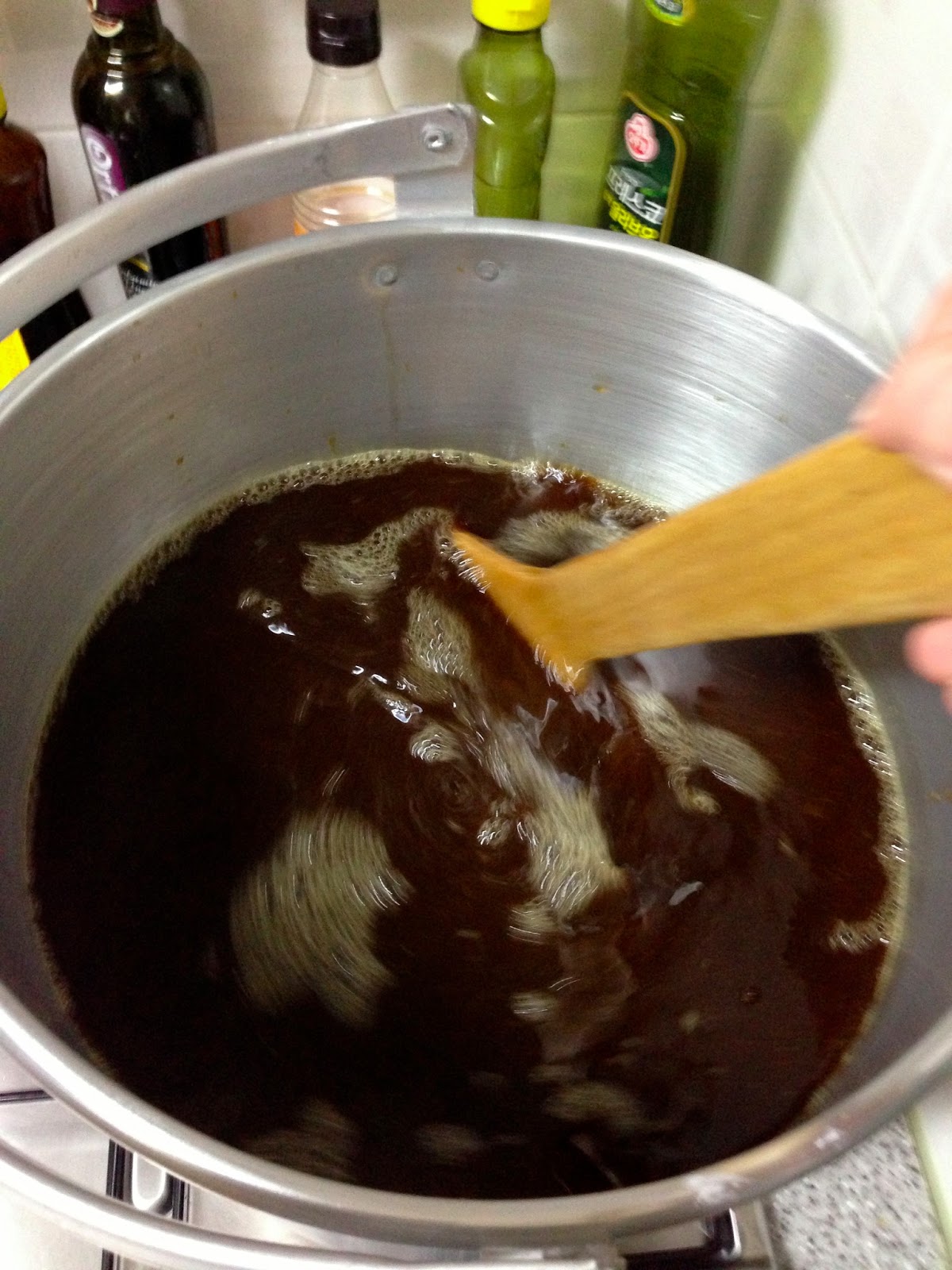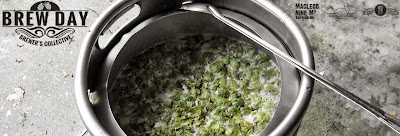Then this tub-o-worthless showed up. But, the money was spent and there was shiny new equipment begging to be used in some fashion or another. There was also little to no chance the beer would taste worse or have less flavor than Hite, so why not give it a go? So I threw 8 liters of water on to boil and got going with what's easily my most shameful moment as a homebrewer.
As with everything there was some silver lining. I'm currently working with an amazingly badass stovetop that gets water up to a boil much faster than any previous setup I've had. Within 15-20 minutes the water was ready to go and it was time for me to pop open the dented and appropriately disrespected lid on this future "beer."
And there it was in all its glory: thick and goopy with the hops already tossed in like the finest oregano of a canned pasta sauce. What else was in the can is something of a mystery, but I'm guessing roughly 3kg of amber extract, cascade hops swept off the floor of a real brewery and shipped over, and some very misplaced love. It did have decent color when mixed in, smelled kinda like beer and had an OK thickness. Treating it like an extract brew I boiled for 60 minutes, cooled it down, and threw it in the fermenter with an extra 8 liters to top it off.
The brewday ended with a 1.042 Original Gravity which isn't great, but it could've been much worse considering where the contents were coming from. In hindsight I would have added less top off water to the fermenter and dealt with a smaller batch, but the habits of a 5 gallon extract brewer die hard. The fermentation wasn't anything overly exciting to see happen, but it did the job and produced some alcoholic content. The Final Gravity was 1.010 resulting in a 4.2% ABV which... isn't great, but it's only a small step down from what's readily available here and is still far superior in taste.




As of this post's writing it's had three weeks in the bottle and has vastly improved with each week. The sweetness of a strictly extract brew is going away more and more with the passing of time, though I'm sure it will never truly be eliminated. It's not the finest beer I've made, but it's rounding into a very drinkable ale that most definitely won't lead to a hangover of any serious magnitude.
All in all this was a great way to test run all of my makeshift equipment and ensure it was in good working order before starting on the long and glorious journey of Brew In A Bag. It also gave me an excuse to match my friend's ridiculous name choice of Bald Eagle APA (a combination of the 'Merican spirit and my recent war on cranial follicles) with an equally ridiculous label. I can't say I would do it again, and certainly wouldn't recommend it, but it's been a fun learning experience.









